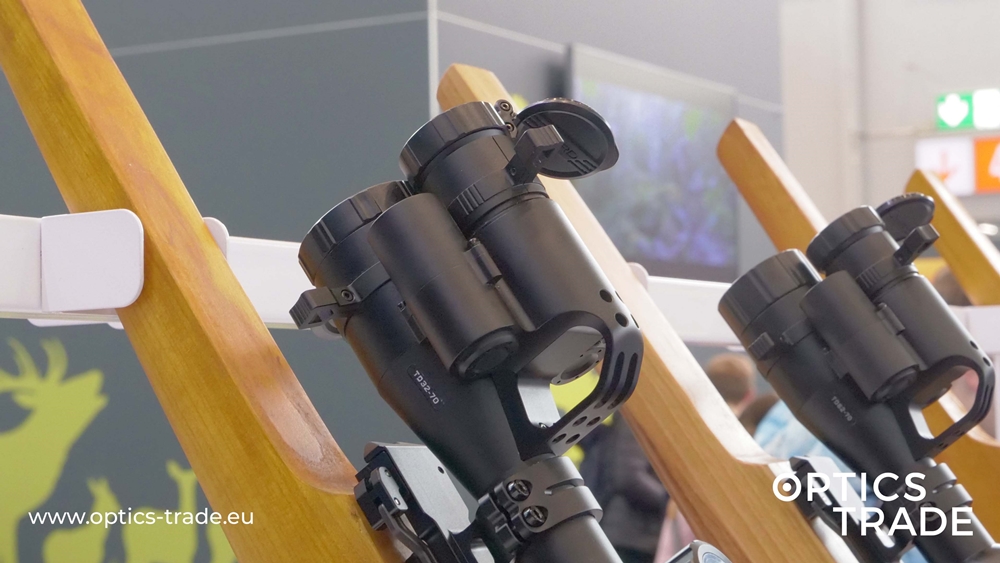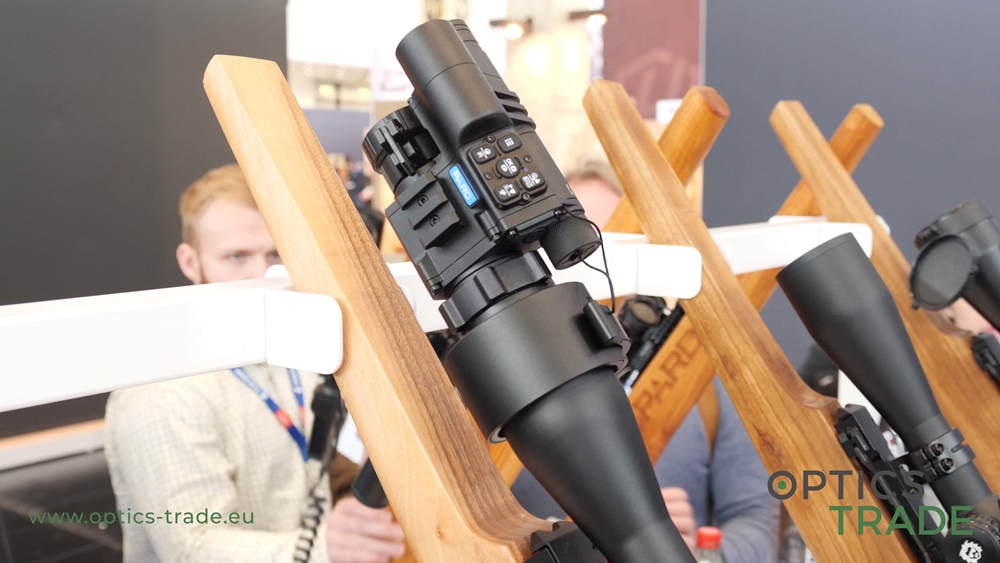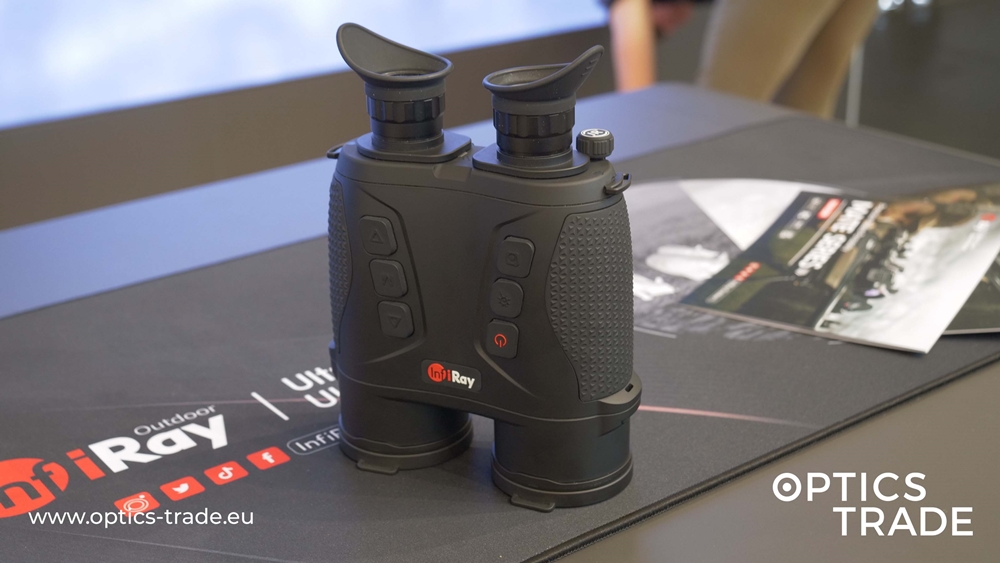Hello and welcome to another episode of Optics Trade Debates. Today’s topic of discussion will tackle a completely new field of optics. We will talk about digital night vision clip-ons and everything that pertains to this topic.
This category was pretty much created by Pulsar. Even now, in 2018, this Belorussian company more or less remains the only manufacturer in this category of NV products.
Most customers wonder how can they know if the clip-on they’re interested in is meant for night vision application. With some companies, it’s actually really easy. If the Pulsar device has the word ‘Forward’ in the name, it was manufactured with this purpose in mind.
But, of course, a more widely-applied definition is necessary here. Digital night vision clip-ons are devices that transform normal daytime riflescopes into night vision ones.
The reason behind it is that in some countries, especially throughout Europe (and Slovenia is one of these), NV clip-ons are only allowed under specific restrictions and local legislation.
For example, as of 2018, there are 11 different regions in Slovenia where these clip-on devices can be used and a person can have them in possession without encountering any problems because there is no reticle inside them.
Digital devices differ from analog ones. Analog clip-ons have a light-amplifying tube on the inside. Many different tubes exist and greatly influence the final price of the clip-on device.
Digital clip-ons made by Pulsar use a different concept entirely. They only have the objective lens and no image intensifier tube. Instead, there is a camera-like sensor and accompanying software. This sensor is made to be used in low light situations.
On the other side of the digital device, there is a display. That means that when the user looks through the scope, they really watch the image shown on the display inside the clip-on.
Since digital night vision clip-ons are quite unorthodox products slowly making a place for themselves on the market, customers are intrigued to know what are the basic features of these devices.
For example, are there any similarities with the conventional NV monoculars and can clip-ons be used with daytime monoculars?
The answer is that digital night vision clip-ons can be used as monoculars the same way as analog devices. That means that the user only has to remove the adapter (quality ones are made by Pulsar and Smartclip) and put on a normal monocular to use it as such.
So this is a device that can be used with two different purposes. Either as a monocular for observation or as a clip-on that goes on a riflescope.
Both analog and digital options come with pros and cons. The main advantage of digital clip-ons is that the user can use them during the day and at night. They can check during the day if any re-zeroing is needed or not.
In 99.9%, the rifle should hit the same place and in the same way as normal. The only exceptions are possible if the user has any problems with their scope, mount or something similar. In that case, the user can adjust the device so that it will hit the same point as without that device in place.
Doing re-zeroing during the day is much harder with analog devices because the user can damage them by exposing the image-intensifying tube to bright sunlight.
The second advantage of digital NV clip-ons is that they are much cheaper than analog devices. The Dipol DN55 XT night vision clip-on is quite affordable but still costs twice as much as digital clip-ons of comparable quality.
What is more, digital NV devices offer better longevity than analog ones. We know that each light-amplifying tube has a limited lifespan. It will only work for a certain number of hours before its ability to amplify light starts to fade and a replacement is necessary. There is no such thing as fading with digital devices.
Last but not least, the external IR illuminator on digital NV devices has a high wavelength of the light emitted and is completely invisible to animals. In the case of Pulsar Forward IR Illuminator device shown in the video and all other digital devices of this type, that means 915 or 940 nanometers of wavelength (depending on the model). The infrared light remains invisible to animals even if the hunter is standing mere 20, 25 metres away and switches the device to maximum intensity setting.
With analog clip-ons, users require illuminators that emit light at around 850-875 nanometres. However, if the hunter looks at red deer at a really close range of about 10 to 50 metres, the animal could potentially spot the human presence since that light is not one hundred percent invisible to their senses. That’s one of the biggest differences and with that, a big disadvantage of analog clip-on devices.
But it is also important to point out that digital NV clip-ons have not yet matched up to the resolution capabilities of analog variants. A recurring problem of digital optical devices in this category, particularly with high magnifications, is pixelation. Pulsar Digital NV Attachment Forward F135 and F155 can be used on riflescopes with the maximum magnification of 7.
Compare that to analog night vision models. Really good clip-ons, when installed on riflescopes, can offer solid optical performance at 10x magnification power and more. Of course, they are also considerably pricier since Gen 2+ and 3 image-intensifying tubes don’t come cheap.
Since the main purpose of these devices is to mount them on a riflescope, they normally feature 1x magnification themselves since the magnification power of the riflescope itself should be enough.
There is another notable difference when it comes to analog NV devices. Even if the hunter uses an extremely low magnification on their riflescope (such as 1x or 1.5x) paired with an analog clip-on, they will receive a full image.
With digital NV clip-ons, on the other hand, the hunter can observe a square image and then adjust the magnification to their wishes. So that’s just another advantage of analog NV clip-ons.
Digital night vision clip-ons obviously have advantages of their own such as being much more affordable, easier for use (including the option of using them during the daytime), offer longevity beyond compare and cannot be damaged by bright sunlight.
Pulsar F135 and F155 come with an IR illuminator already installed. Note that the user can replace it with a more powerful unit if deemed necessary. At the moment, these are the only two devices in this category that are in production.
On the previous and now discontinued models named Pulsar Digital NV Attachment Forward DFA75 there was a possibility of adding an additional IR illuminator next to the one pre-installed. It’s a true shame that newer Pulsar models do not offer this option of having 2 IR illuminators.
Now, NV clip-ons are still rather uncommon optical devices and many customers wonder about the area of application of these. These devices do not have a reticle installed in their construction but are primarily produced with hunting in mind. Especially the digital ones that are practically only used by hunters. Analog devices are also employed by militia and police forces. These are intended for shooting indoor and during the nighttime.
Bear in mind that one should always ensure compliance with local legislatures and restrictions of use before making a purchase in this category of optical devices. Their use is strongly regulated and the laws continue to change with a more and more liberal approach to this field.
This should cover everything we had in mind for today’s episode. Thank you for your attention. Please like and share this video if you found it useful. If you have any questions left, feel free to contact us via email or the comment section below and we’ll get back to you. Subscribe to our YouTube channel for more of similar content and we’ll see you next time. Goodbye.
Products mentioned:




